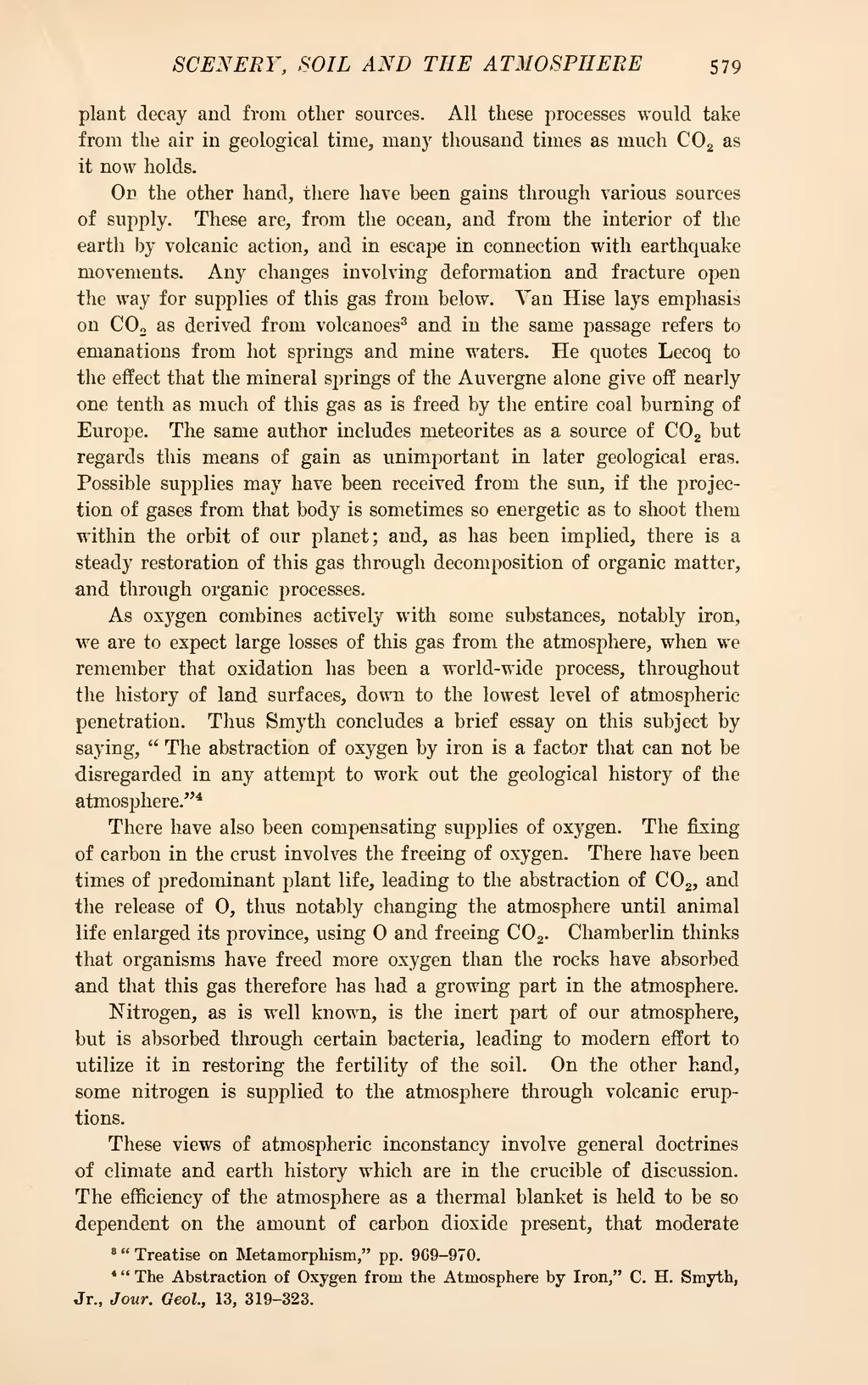plant decay and from other sources. All these processes would take from the air in geological time, many thousand times as much CO2 as it now holds.
On the other hand, there have been gains through various sources of supply. These are, from the ocean, and from the interior of the earth by volcanic action, and in escape in connection with earthquake movements. Any changes involving deformation and fracture open the way for supplies of this gas from below. Van Hise lays emphasis on CO2 as derived from volcanoes[1] and in the same passage refers to emanations from hot springs and mine waters. He quotes Lecoq to the effect that the mineral springs of the Auvergne alone give off nearly one tenth as much of this gas as is freed by the entire coal burning of Europe. The same author includes meteorites as a source of CO2 but regards this means of gain as unimportant in later geological eras. Possible supplies may have been received from the sun, if the projection of gases from that body is sometimes so energetic as to shoot them within the orbit of our planet; and, as has been implied, there is a steady restoration of this gas through decomposition of organic matter, and through organic processes.
As oxygen combines actively with some substances, notably iron, we are to expect large losses of this gas from the atmosphere, when we remember that oxidation has been a world-wide process, throughout the history of land surfaces, down to the lowest level of atmospheric penetration. Thus Smyth concludes a brief essay on this subject by saying, "The abstraction of oxygen by iron is a factor that can not be disregarded in any attempt to work out the geological history of the atmosphere."[2]
There have also been compensating supplies of oxygen. The fixing of carbon in the crust involves the freeing of oxygen. There have been times of predominant plant life, leading to the abstraction of CO2, and the release of O, thus notably changing the atmosphere until animal life enlarged its province, using and freeing CO2. Chamberlin thinks that organisms have freed more oxygen than the rocks have absorbed and that this gas therefore has had a growing part in the atmosphere.
Nitrogen, as is well known, is the inert part of our atmosphere, but is absorbed through certain bacteria, leading to modern effort to utilize it in restoring the fertility of the soil. On the other hand, some nitrogen is supplied to the atmosphere through volcanic eruptions.
These views of atmospheric inconstancy involve general doctrines of climate and earth history which are in the crucible of discussion. The efficiency of the atmosphere as a thermal blanket is held to be so dependent on the amount of carbon dioxide present, that moderate

